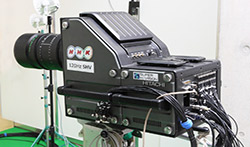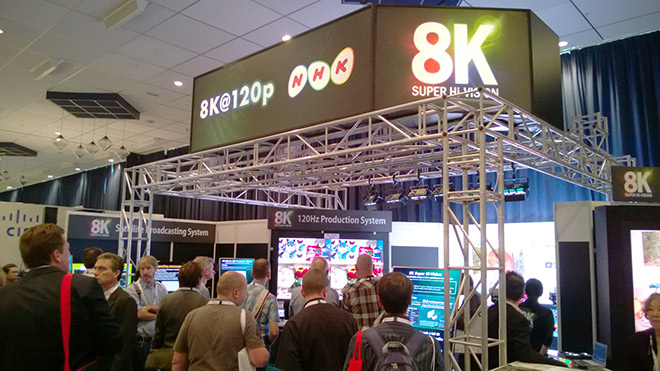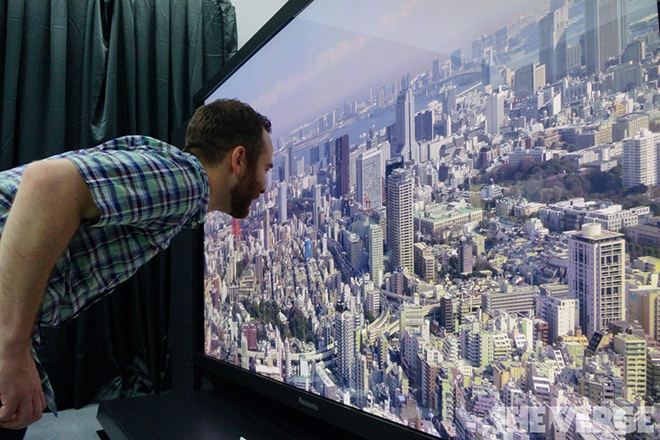Europe's online source of news, data & analysis for professionals involved in packaged media and new delivery technologies

IBC - Delivering super high-definition
From our correspondent BOB AUGER. The crowds arrived on cue at the opening of IBC 2014 on Friday, to find an unfamiliar landscape. The construction of yet another exhibition hall alongside Hall 1 at the RAI site means that many of the themed 'IBC Content Everywhere' exhibitors are squeezed into a temporary Hall 14 at the front of the show. Others are scattered across Halls 2-13, which sums up this year's event: What you seek may be everywhere; it just takes a long time to find it. No wonder content discovery providers are enjoying a boom.
Next to Hall 8, hidden away at the back of the complex, lies the IBC Future Zone and if quality is your measure, this is where you will find the yardstick. For several years, NHK has wowed visitors to IBC with Super Hi-vision. Memorable moments include the live broadcast from Thameside London. The amazing pictures were an eye-opener and the 22-channel audio, which allowed the audience to identify boats passing below the camera and aircraft flying overhead, helped to complete the illusion. At the time, it tied up a large part of the available bandwidth between the UK and the Netherlands, using both satellite and landlines, but at least it worked.
So, where is Super Hi-vision today? In partnership with others, NHK has 'productized' the 8K/120Hz format, starting with live trials at the FIFA World Cup in Brazil. The fruits of this research effort are on display in the Future Zone. From a video camera reminiscent of the European launch of colour TV in the late 1960s come pictures that are almost as good as being there. The image quality is superb, good enough to allow visitors to take pictures of the source and original scene, at an angle, in available light, without any visible artefacts. Today's iteration is expected to undergo public trials from 2016, culminating in a full service by 2020.
The fibre optic interface that connects camera and screen in the IBC demonstration can hardly be extended to the home, so some compression technology will be required. At IBC, the progress made with HEVC is to be seen everywhere, going a long way towards solving bandwidth issues at 4K. Dolby Atmos, previously regarded as intended only for first-run theaters, is set to bring immersive audio to the home. Now the challenge is to establish standards that will meet the needs of tomorrow, as well as those of the immediate future.
DVB sets digital video broadcasting and distribution standards for more than 60% of the globe and also looks after the MHP standard (found in the Sony PS4, among many other places). On Friday, it revealed at IBC that it will have low-noise Ultra-HD TV standards in place by 2017/18. Support for 100/120Hz frame rates, 2160x3840 frame sizes (and below) and advanced sound systems is included in the spec, as is improved 3D handling - just in case there is a resurgence!
With the rumoured 4K Blu-ray disc from the BDA on its way, we can only hope that those responsible for the format have kept the future in mind. This future is on display at IBC and it could mean that Blu-ray loses its crown as the high-quality medium of choice for the discerning home viewer. The delivery of sound and pictures is about to pass a threshold, beyond which the only criteria are availability and cost.
The vision for 2020 is on display here in Amsterdam, at IBC 2014.


Story filed 13.09.14




















